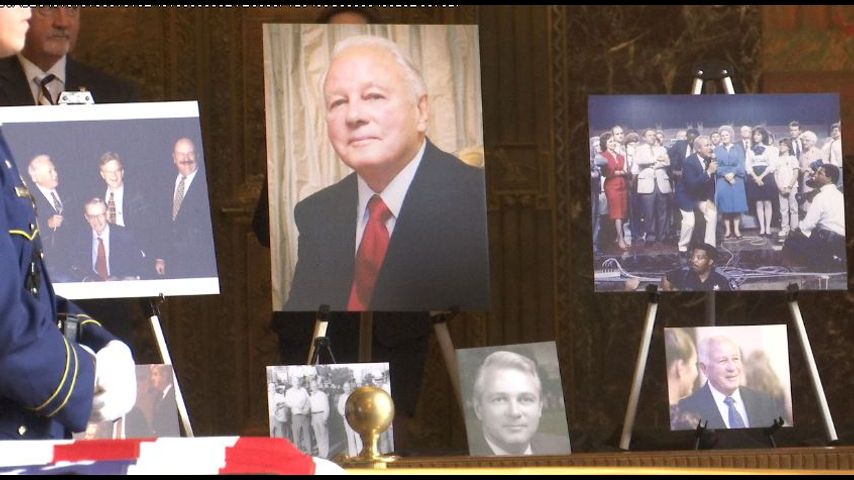Decades later, Edwards' support of world-renowned project paying off
LIVINGSTON PARISH - In the early days of 1992, Louisiana was simultaneously taking steps into the past and the future.
Edwin Washington Edwards was sworn in for his record-fourth term as governor January 13. Weeks later, Louisiana would be chosen as one of two sites nationwide to be home to a Laser Interferometer Gravitational-wave Observatory or LIGO.
Livingston, Louisiana, and Hanford, Washington were the two locations selected out of nearly two dozen applicants.
"It's a very, very big deal," Dr. Gabriela Gonzalez, of the LSU Department of Physics and Astronomy said. "These discoveries, these observatories have made observations that have been discoveries on [the] first pages of newspapers worldwide in 2015, and they keep making news. But it took 20 years to get here."
LSU's search for gravitational waves began decades earlier.
Dr. William Hamilton landed on campus in Baton Rouge in 1970 to teach, research and conduct experiments alongside Dr. Warren Johnson.
According to LSU, funding for laser interferometer research dates back to the 1970s. But it wasn't until 1990 that the National Science Foundation proposed building two in the United States.
Trending News
As sites were suggested and submitted, Hamilton says many outside of his field were not on board with the attempt to bring the project to Louisiana.
"The general feeling was LSU couldn't do anything other than play football, and then only periodically well," Hamilton said. "So the idea that there would be something that was of world significance was something that people didn't really take seriously."
One person who was on board was Edwards.
Years later, Hamilton still recalls a story LSU Chancellor Emeritus, Dr. James Wharton, told often. Wharton needed $200,000 to buy the land LIGO would eventually be built on. On the day Edwards returned to the Governor's Mansion, Wharton visited Edwards.
"[Wharton] told Edwards about the importance of the site, of the physics being done at the site," Hamilton recalls.
Edwards did not wait long, Hamilton says, to oblige.
"'If you come in tomorrow, after work, I'll have the money for you,'" Hamilton said, describing Edwards' response.
Seven years later, LIGO would be complete. Hamilton says it's likely Louisiana would have missed out on the chance to house the observatory, had Edwards not thrown his support behind the project and given Wharton the $200,000 check.
"We got the check, and the rest is pretty much history," Hamilton says.
Decades later, support, including from Edwards, was still proving to pay off.
On September 14, 2015, gravitational waves were detected for the first time at both LIGO facilities. LSU says the historic and unprecedented moment confirmed "a major prediction of Albert Einstein’s 1915 general theory of relativity."




